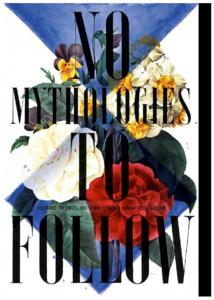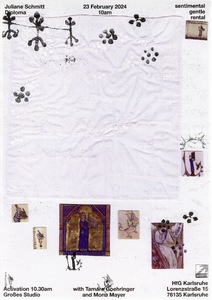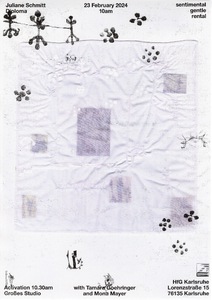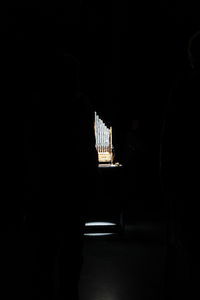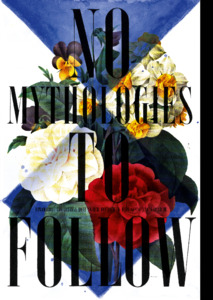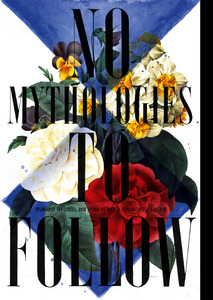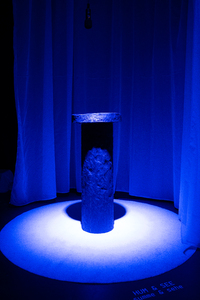"Installation"
| Begriff | Installation |
| Metakey | Kategorie (institution:project_category) |
| Typ | Keyword |
| Vokabular | HfG |
488 Inhalte
- Seite 1 von 41
Prozessbild ”Die Insel” 01
- Titel
- Prozessbild ”Die Insel” 01
- Autor/in
- Kategorie
- Titel
- Prozessbild ”Die Insel” 01
- Titel (en)
- Process ”The Island” 01
- Urheberrechtshinweis
- © Yinxuan Chen
- Rechtsschutz/Lizenz
- Freigabe Nutzung HfG
- Medienersteller/in
- Beziehung/Funktion
- Abgebildete Personen
- Projektleiter/in
- Semester
- Studiengang
- Typ der Abschlussarbeit
- Importiert am
- 14.11.2024
- Übergeordnete Sets
- 1
Projektbeschreibung
- Titel
- Projektbeschreibung
- Autor/in
- Kategorie
- Typ des Projekts/Werks
- Schlagworte
- Titel
- Projektbeschreibung
- Urheberrechtshinweis
- © Johanna Hoth; Hasan Halilovic (grafische Gestaltung)
- Rechtsschutz/Lizenz
- Freigabe Nutzung HfG
- Medienersteller/in
- Beziehung/Funktion
- Medien-Beschreibung
- Mehrseitiges PDF mit Projektbeschreibung Text/Bild.
- Semester
- Studiengang
- Typ der Abschlussarbeit
- Importiert am
- 30.07.2024
- Übergeordnete Sets
- 1
Poster
- Titel
- Poster
- Autor/in
- Kategorie
- Typ des Projekts/Werks
- Schlagworte
- Datierung
- 23.02.2024
- Titel
- Poster
- Urheberrechtshinweis
- © Juliane Schmitt
- Rechtsschutz/Lizenz
- Freigabe Nutzung HfG
- Medienersteller/in
- Beziehung/Funktion
- Medien-Beschreibung
- Poster in Zusammenarbeit mit Jonathan Castro
- Projektleiter/in
- Semester
- Studiengang
- Typ der Abschlussarbeit
- Importiert am
- 09.08.2024
- Übergeordnete Sets
- 1
Poster
- Titel
- Poster
- Autor/in
- Kategorie
- Typ des Projekts/Werks
- Schlagworte
- Datierung
- 23.02.2024
- Titel
- Poster
- Urheberrechtshinweis
- © Juliane Schmitt
- Rechtsschutz/Lizenz
- Freigabe Nutzung HfG
- Medienersteller/in
- Beziehung/Funktion
- Projektleiter/in
- Semester
- Studiengang
- Typ der Abschlussarbeit
- Importiert am
- 09.08.2024
- Übergeordnete Sets
- 1
Portativ-Orgel sentimental gentle rental
- Titel
- Portativ-Orgel sentimental gentle rental
- Autor/in
- Kategorie
- Typ des Projekts/Werks
- Schlagworte
- Datierung
- 23.02.2024
- Titel
- Portativ-Orgel sentimental gentle rental
- Urheberrechtshinweis
- © Nis Petersen
- Freigabe Nutzung HfG
- Projektleiter/in
- Semester
- Studiengang
- Typ der Abschlussarbeit
- Importiert am
- 09.08.2024
- Übergeordnete Sets
- 1
Plakat (hohe Auflösung)
- Titel
- Plakat (hohe Auflösung)
- Autor/in
- Kategorie
- Typ des Projekts/Werks
- Schlagworte
- Titel
- Plakat (hohe Auflösung)
- Urheberrechtshinweis
- © Johanna Hoth; Hasan Halilovic (grafische Gestaltung)
- Rechtsschutz/Lizenz
- Freigabe Nutzung HfG
- Beziehung/Funktion
- Semester
- Studiengang
- Typ der Abschlussarbeit
- Importiert am
- 30.07.2024
- Übergeordnete Sets
- 1
Plakat
- Titel
- Plakat
- Autor/in
- Kategorie
- Typ des Projekts/Werks
- Schlagworte
- Titel
- Plakat
- Urheberrechtshinweis
- © Johanna Hoth; Hasan Halilovic (grafische Gestaltung)
- Rechtsschutz/Lizenz
- Freigabe Nutzung HfG
- Medienersteller/in
- Beziehung/Funktion
- Semester
- Studiengang
- Typ der Abschlussarbeit
- Importiert am
- 30.07.2024
- Übergeordnete Sets
- 1
Plakat
- Titel
- Plakat
- Autor/in
- Kategorie
- Schlagworte
- Datierung
- 24.10.2024
- Titel
- Plakat
- Titel (en)
- Poster
- Urheberrechtshinweis
- © Joshua Weber
- Rechtsschutz/Lizenz
- Freigabe Nutzung HfG
- Medienersteller/in
- Beziehung/Funktion
- Projektleiter/in
- Semester
- Studiengang
- Typ der Abschlussarbeit
- Importiert am
- 03.11.2024
- Übergeordnete Sets
- 1
Parquet Chest
- Titel
- Parquet Chest
- Autor/in
- Kategorie
- Datierung
- Oktober 2023
- Titel
- Parquet Chest
- Urheberrechtshinweis
- © Julius Bläser
- Rechtsschutz/Lizenz
- Freigabe Nutzung HfG
- Medienersteller/in
- Beziehung/Funktion
- Projektleiter/in
- Semester
- Studiengang
- Typ der Abschlussarbeit
- Importiert am
- 05.11.2024
- Übergeordnete Sets
- 1
Objekt 3
- Titel
- Objekt 3
- Autor/in
- Kategorie
- Schlagworte
- Datierung
- 24.10.2024
- Titel
- Objekt 3
- Titel (en)
- Object 3
- Urheberrechtshinweis
- © Joshua Weber
- Rechtsschutz/Lizenz
- Freigabe Nutzung HfG
- Medienersteller/in
- Beziehung/Funktion
- Medien-Beschreibung
- Die Objekte der Ausstellung und ihr Erlebnis
- Medien-Beschreibung (en)
- The objects of the exhibition and the experience
- Projektleiter/in
- Semester
- Studiengang
- Typ der Abschlussarbeit
- Importiert am
- 03.11.2024
- Übergeordnete Sets
- 1
Objekt 2
- Titel
- Objekt 2
- Autor/in
- Kategorie
- Schlagworte
- Datierung
- 24.10.2024
- Titel
- Objekt 2
- Titel (en)
- Object 2
- Urheberrechtshinweis
- © Joshua Weber
- Rechtsschutz/Lizenz
- Freigabe Nutzung HfG
- Medienersteller/in
- Beziehung/Funktion
- Medien-Beschreibung
- Die Objekte der Ausstellung und ihr Erlebnis
- Medien-Beschreibung (en)
- The objects of the exhibition and the experience
- Projektleiter/in
- Semester
- Studiengang
- Typ der Abschlussarbeit
- Importiert am
- 03.11.2024
- Übergeordnete Sets
- 1
Objekt 1
- Titel
- Objekt 1
- Autor/in
- Kategorie
- Schlagworte
- Datierung
- 24.10.2024
- Titel
- Objekt 1
- Titel (en)
- Object 1
- Urheberrechtshinweis
- © Joshua Weber
- Rechtsschutz/Lizenz
- Freigabe Nutzung HfG
- Medienersteller/in
- Beziehung/Funktion
- Medien-Beschreibung
- Die Objekte der Ausstellung und ihr Erlebnis
- Medien-Beschreibung (en)
- The objects of the exhibition and the experience
- Projektleiter/in
- Semester
- Studiengang
- Typ der Abschlussarbeit
- Importiert am
- 03.11.2024
- Übergeordnete Sets
- 1

